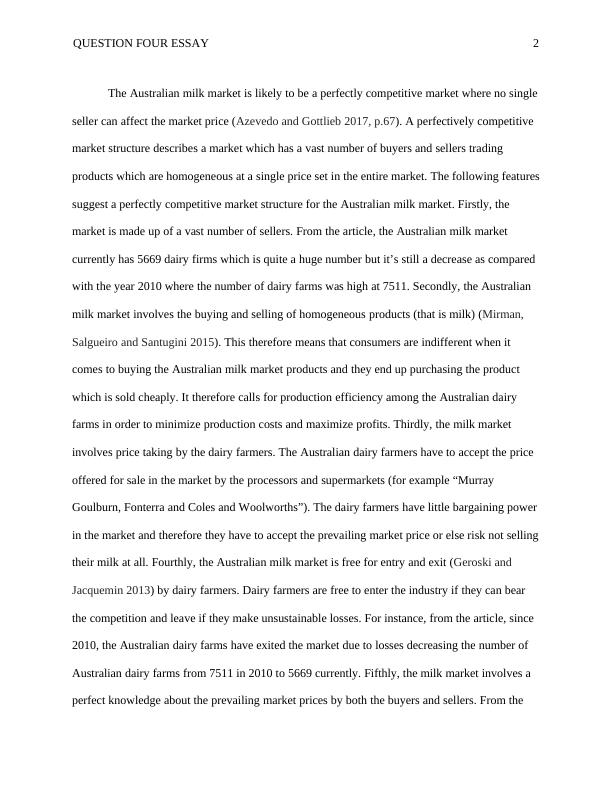Questions for Essay Australia 2022
Answering short answer questions related to drought conditions in Australia, demand and supply graphs for Australian wool and raw cotton markets, and the impact of internet booking on the demand for Qantas flights.
6 Pages1464 Words14 Views
Added on 2022-10-13
Questions for Essay Australia 2022
Answering short answer questions related to drought conditions in Australia, demand and supply graphs for Australian wool and raw cotton markets, and the impact of internet booking on the demand for Qantas flights.
Added on 2022-10-13
ShareRelated Documents
End of preview
Want to access all the pages? Upload your documents or become a member.
Economic Concepts Behind Dairy Market Structure in Australia
|7
|1596
|230
Economics: Characteristics of a Perfectly Competitive Market
|9
|1441
|455
Economics for Managers
|21
|3971
|408
Economics for Managers: Perfect Competition, Monopoly, Oligopoly, and Australian Supermarket Industry
|16
|4513
|222
Economics: Market Structures and Housing Affordability Crisis
|15
|3199
|335
Dairy Farmers Exiting the Industry Across NSW Due to Low Milk Prices
|6
|1197
|204



